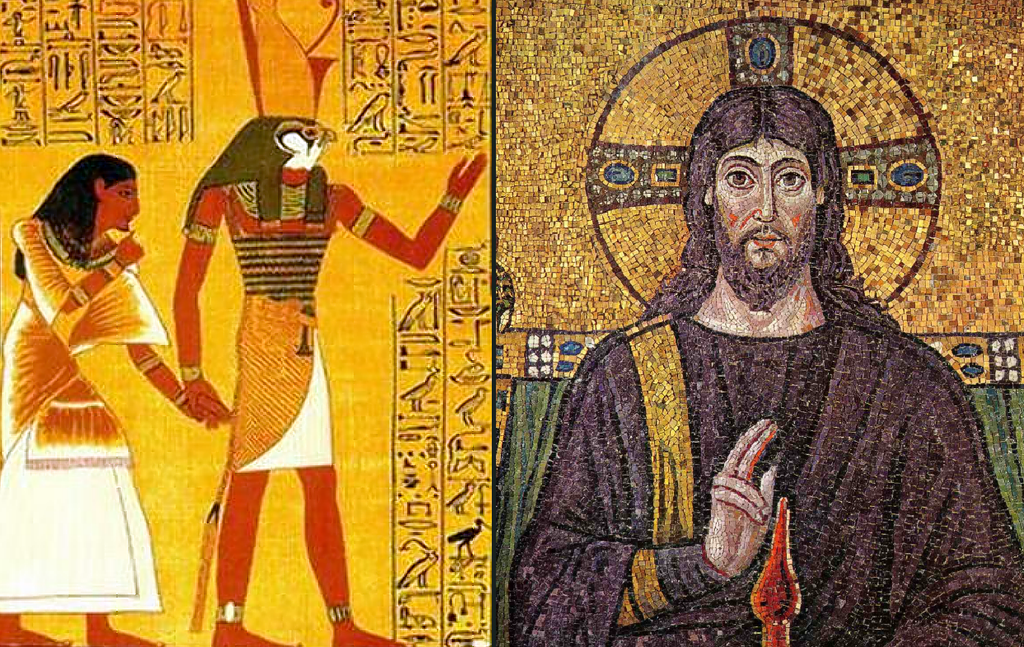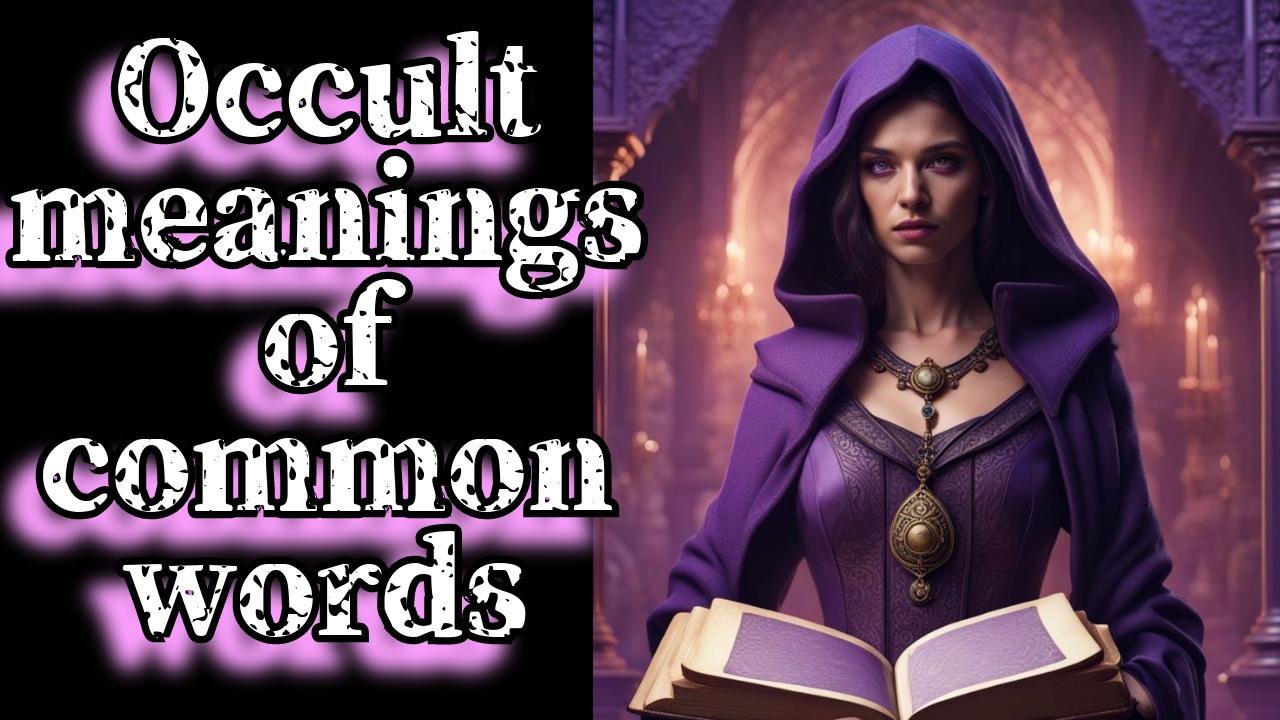
Sun worship has been a prevalent aspect of human civilization throughout history, with various cultures and civilizations venerating the sun as a symbol of divine power, life, and renewal. This practice has roots in ancient times and continues to influence religious and cultural beliefs in many societies. In this essay, we will explore the significance of sun worship and delve into the rich symbolism associated with the sun.
Solar Symbolism:
Life and Vitality: The sun is a universal symbol of life and vitality. Its warmth and light are essential for the sustenance of life on Earth. Many ancient cultures believed that the sun’s energy was a life-giving force, bestowing fertility upon the land and its inhabitants. The worship of the sun was, therefore, a way of expressing gratitude for the abundance it provided.
Cycle of Renewal: The sun’s daily rise and fall, along with the changing seasons, symbolize the cyclical nature of life, death, and rebirth. Sun worship often incorporates rituals and festivals tied to solstices and equinoxes, marking the changing phases of the sun and the corresponding renewal of nature. These celebrations are a testament to the interconnectedness of human life with the celestial cycles.
Divine Power: In many cultures, the sun is personified as a deity or a representation of divine power. The sun’s omnipresence and its ability to illuminate the entire world made it a natural symbol for an all-seeing, all-knowing force. Sun gods and goddesses became central figures in religious pantheons, embodying qualities such as wisdom, strength, and benevolence.
Symbol of Unity: The sun, being a celestial body that transcends cultural and geographical boundaries, has often been seen as a symbol of unity. Its rays reaching every corner of the Earth symbolize a connection between all living things. This concept of unity is reflected in various religious and spiritual practices that emphasize the relationship between humanity and the natural world.
Ancient Egyptian Religion: The sun was considered a powerful symbol of life and regeneration.
Here are some key aspects of sun worship in ancient Egyptian religion:
Deity: Ra (Re): Ra was the primary solar deity and one of the most important gods in the Egyptian pantheon. He was associated with the sun and the creator of all life. He was often depicted with a sun disk on his head, symbolizing his association with the sun. Ra was believed to travel across the sky during the day and journey through the underworld at night.
Significance: The sun was closely tied to creation and regeneration in Egyptian cosmology. The daily journey of Ra across the sky represented the cycle of life, death, and rebirth.
Rituals: Various rituals and festivals were dedicated to Ra, emphasizing his role in sustaining life.
Sun Temples: Temples like the famous Karnak complex were built to honor the sun god and those dedicated to the worship of the sun were built throughout ancient Egypt. These temples were designed with specific alignments and orientations to capture the rays of the sun at particular times of the day, emphasizing the solar connection.
Solar Symbolism: The sun played a symbolic role in Egyptian religious iconography. The sun disk, known as the “Aten” was a common symbol associated with solar deities. It often appeared atop the heads of various gods and goddesses, representing their connection to the sun.
Solar Barques: The sun was believed to travel across the sky in a boat or barque. Ra’s journey through the sky during the day and through the underworld at night was depicted as a voyage on a solar barque. This concept reflected the cyclical nature of the sun’s movement.
Hymns and Prayers: The ancient Egyptians composed hymns and prayers dedicated to the sun, praising its life-giving and sustaining qualities. These texts often emphasized the sun’s role in the creation of the world and its benevolence in providing light and warmth.
Solar Calendar: The ancient Egyptians developed a solar calendar based on the annual rising of the star Sirius, which coincided with the annual flooding of the Nile River. This calendar reflected the importance of celestial events, including the sun’s movements, in the agricultural and religious life of the Egyptians.
Overall, sun worship was deeply ingrained in the religious beliefs and practices of ancient Egyptians, influencing their architecture, art, and daily rituals. The sun represented not only a celestial body but also a divine force essential for life and prosperity.
Ancient Roman Religion: In ancient Rome, the sun was associated with the god Sol Invictus, meaning the “Unconquered Sun.” The cult of Sol Invictus became particularly prominent during the later Roman Empire. In ancient Roman religion, sun worship was not a dominant or organized cult like it was in some other ancient civilizations, such as Ancient Egypt.
However, the Romans did acknowledge and venerate the sun as a powerful and vital force in the cosmos. The sun played a significant role in Roman religious practices, symbolism, and iconography.
The Romans identified the sun with several deities from their pantheon, and these associations evolved over time. One of the earliest sun deities in Roman religion was Sol Indiges, an indigenous sun god. As Roman influence expanded, they encountered other cultures with their own sun deities, and these influences shaped the Roman understanding of the sun.
Deity: Sol Invictus, the “Unconquered Sun,” was a late Roman god associated with the sun. Emperor Aurelian officially created the Sol Invictus cult in the 3rd century AD.
Festivals: The festival of Sol Invictus, celebrated on December 25th, coincided with the winter solstice and the gradual lengthening of daylight. This date later influenced the Christian celebration of Christmas.
Sol Indiges: As mentioned earlier, Sol Indiges was an early Roman sun god. The name “Indiges” suggests a connection to indigetes, local deities associated with specific places or communities.
Apollo: While primarily associated with music, poetry, and prophecy, Apollo was also linked to the sun, especially as Apollo Helios. The identification of Apollo with the sun was influenced by Greek mythology, where Helios was the personification of the sun.
Sun worship in Rome was often intertwined with other cults and deities, and the sun’s symbolism was incorporated into various religious ceremonies, monuments, and artwork. The solar disc, often depicted with rays, was a common symbol associated with the sun.
It’s important to note that Roman religious practices were diverse, and individuals might have personal preferences for certain deities or cults. The Roman Empire’s vast and multicultural nature allowed for the incorporation of various religious beliefs and practices, contributing to the syncretic nature of Roman religion.
Inca Civilization: The Inca civilization in South America worshipped Inti, the sun god. The sun held great significance in their agricultural and religious practices. The Inca civilization, which thrived in South America from the early 15th century until the Spanish conquest in the 16th century, had a complex religious system that included sun worship. The sun, known as Inti, held great significance in Inca cosmology and was considered the most important deity in their pantheon.
Deity: The emperor of the Inca Empire was believed to be the direct descendent of Inti. Inti was revered as the ancestral father of the Inca rulers and the source of life and warmth. The Inca believed that their ruler, the Sapa Inca, was directly descended from Inti, reinforcing the divine nature of the ruler’s authority.
Sacrifices: The Inca performed rituals and sacrifices to honor Inti, especially during important agricultural events. Offerings included gold, silver, and even human sacrifices in extreme cases.
Coricancha (Qorikancha): The Coricancha, located in the capital city of Cusco, Peru, was the principal temple dedicated to Inti. It was an important religious and administrative center and was adorned with gold and precious metals. The temple complex also included rooms dedicated to the worship of other deities.
Inti Raymi: Inti Raymi, the Festival of the Sun, was one of the most significant religious ceremonies in the Inca calendar. Held annually in honor of Inti, the festival took place during the winter solstice in June. It involved elaborate rituals, processions, and animal sacrifices. The Sapa Inca would perform ceremonies at the Coricancha, and the celebration would continue with feasts, music, and dances.
Solar Observatories: The Inca were skilled astronomers, and they built structures such as the “Intihuatana” (Hitching Post of the Sun) in the city of Machu Picchu. These structures were believed to have astronomical significance and were used for observing the movements of the sun. The Intihuatana, for example, is a stone pillar that casts a shadow that aligns with the sun during specific times of the year.
Solar Agriculture: The Inca also incorporated solar symbolism into their agricultural practices. The layout of agricultural terraces, known as andenes, often followed the orientation of the sun to maximize sunlight exposure for crop growth.
Sun Imagery: Sun symbols and images were prevalent in Inca art and iconography. The sun disc with a face, representing Inti, was a common motif in textiles, pottery, and metalwork.
It’s important to note that Inca religion was syncretic, meaning it incorporated elements from various cultures and regions incorporated into the empire. The Inca rulers promoted the cult of Inti to unify the diverse ethnic groups within the empire, under a common religious framework.
Aztec Civilization: The Aztecs, a Mesoamerican civilization that flourished in central Mexico from the 14th to the 16th centuries, had a complex religious belief system that included sun worship as a significant element.
Deity: Huitzilopochtli played a crucial role in the Aztec pantheon and was associated with the founding of their capital, Tenochtitlan. Huitzilopochtli, often referred to as the “Blue Hummingbird on the Left” or the “Left-Handed Hummingbird,” was the chief god of the Aztecs and the god of the sun, war, and human sacrifice. According to Aztec mythology, Huitzilopochtli was born to the goddess Coatlicue, and he was associated with the daily journey of the sun across the sky.
Symbolism: The sun symbolized the journey of Huitzilopochtli across the sky. The Aztecs believed that the sun required nourishment, leading to the practice of human sacrifices to ensure the sun’s vitality and continued movement across the sky.
The Aztec Sun Stone: The Aztecs created a massive stone sculpture known as the Aztec Sun Stone or the Stone of the Five Suns, which is often incorrectly called the “Aztec Calendar Stone.” This intricate monolith is adorned with symbolic carvings that represent cosmic cycles, including the sun’s movements.
Templo Mayor: The Templo Mayor in the Aztec capital city of Tenochtitlan was a major religious center where the Great Temple was dedicated to Huitzilopochtli and Tlaloc, the god of rain. The temple complex was a focal point for sun worship, and human sacrifices were performed there to appease the gods.
Festivals and Rituals: The Aztecs held various festivals and rituals to honor the sun. One of the most important ceremonies was the Xiuhmolpilli, a festival that marked the end of a 52-year cycle in the Aztec calendar. This event involved elaborate rituals, including the sacrifice of captives to ensure the renewal of the sun.
The worship of the sun played a central role in Aztec religion, reflecting their understanding of the natural world, cosmic cycles, and the interconnectedness of life and the divine.
Hinduism: In Hinduism, the sun is associated with the deity Surya. Surya is considered a solar deity and is worshipped in various forms in Hindu rituals and prayers. The Rigveda, one of the oldest sacred texts of Hinduism, contains hymns dedicated to the Sun, highlighting its importance in early Vedic traditions.
Deity: Surya Deva (Sun God) is often depicted as a benevolent deity with a golden hue riding a chariot drawn by seven horses, representing the seven colors of the spectrum and the days of the week. Surya is believed to be the source of light and energy, and is considered the soul of the world.
Spiritual Significance: Sun worship is not just a form of reverence for a celestial body; it also carries deep spiritual symbolism. The Sun is seen as a symbol of knowledge, consciousness, and the eternal principle that sustains life. Worshiping the Sun is believed to bestow spiritual enlightenment and wisdom.
Festivals: Hinduism has several festivals dedicated to the Sun, the most notable being Chhath Puja. Chhath is a Hindu festival celebrated in various parts of India, particularly in the states of Bihar, Jharkhand, and Uttar Pradesh. It involves paying homage to the Sun God and is observed with rituals, fasting, and prayer, often performed by women.
Gayatri Mantra: The Gayatri Mantra, found in the Rigveda, is one of the most powerful and revered mantras in Hinduism. It is dedicated to Savitar, a form of the Sun God, and is recited during prayer and meditation. The mantra is considered a source of divine energy and a means of seeking spiritual guidance.
Surya Namaskar (Sun Salutation): Surya Namaskar is a series of yoga postures dedicated to the Sun. It is performed in the early morning, facing the rising sun, and is a holistic exercise that combines physical postures with rhythmic breathing and mental focus. Surya Namaskar is considered a way to express gratitude to the Sun and promote physical and mental well-being.
Temples: While there are not as many temples dedicated solely to the Sun as there are to other deities in Hinduism, some notable ones include the Konark Sun Temple in Odisha and the Martand Sun Temple in Jammu and Kashmir.
Sun worship in Hinduism is diverse and manifests in various forms, ranging from philosophical and symbolic reverence to ritualistic practices and festivals. It reflects the profound connection between the natural elements and the spiritual beliefs within the Hindu tradition.
Japanese Shinto: In Shinto, the traditional religion of Japan, the sun goddess Amaterasu is a central figure. The Japanese imperial family claims descent from Amaterasu, emphasizing the connection between the sun and the ruling line. In Shinto, natural elements such as mountains, rivers, trees, and celestial bodies are considered kami, which are divine or sacred spirits. Among these natural elements, the sun holds a significant place.
Mythology: Amaterasu’s temporary retreat to a cave led to darkness. The other deities devised a plan to lure her out, and when she emerged, light was restored to the world. This myth is often interpreted as symbolizing the importance of the sun’s light and warmth.
Ise Grand Shrine: The Ise Grand Shrine, or Ise Jingu, is the most sacred Shinto shrine in Japan. It is dedicated to Amaterasu and is rebuilt every 20 years in a cyclical ritual known as Shikinen Sengu. The shrine complex includes the Naiku (Inner Shrine) and Geku (Outer Shrine). The Naiku enshrines Amaterasu, and the entire shrine is oriented to the sun, emphasizing its connection to the solar deity.
Rituals and Festivals: Shinto festivals and rituals often involve expressions of gratitude for the sun and prayers for its continued blessings. The New Year’s celebration, known as Hatsumode, is a time when many people visit Shinto shrines to pray for good fortune in the coming year, often expressing gratitude for the sun’s life-giving energy.
Symbolism: The sun is a powerful symbol in Shinto iconography. It is often represented by the use of the circle, which can be seen in torii gates, shimenawa (sacred ropes), and other Shinto emblems. The rising sun motif is also a common symbol, reflecting the importance of the sun’s daily renewal.
While the worship of the sun is integrated into Shinto practices, it’s essential to note that Shinto is a flexible and diverse belief system, and individual practices may vary. Shinto, as a nature-based religion, emphasizes the interconnectedness of the natural world, and the sun plays a crucial role in this spiritual framework.
Native American Cultures: Some Native American tribes, such as the Hopi and Navajo, incorporate sun worship into their spiritual practices. The sun is often seen as a symbol of life and fertility. Sun worship was a significant aspect of many Native American cultures, and various tribes across North America held diverse beliefs and practices related to the sun. It’s important to note that while there are some commonalities, each tribe had its unique cosmology and spiritual practices.
Symbolism: The sun is often seen as a symbol of life, warmth, and fertility. It plays a role in creation myths and is associated with agricultural cycles.
Rituals: Sun dances and ceremonies are conducted in some tribes to honor the sun and seek its blessings for the community.
Here are a few examples of how sun worship manifested in different Native American cultures:
Hopi Tribe:
The Hopi people of the Southwest have a strong connection to the sun in their religious beliefs. They perform ceremonies and rituals that revolve around the sun, emphasizing its role in their agricultural cycles.
The Katsina (Kachina) ceremonies are central to Hopi spirituality, involving masked dancers representing spirits associated with various aspects of nature, including the sun.
Navajo Nation:
The Navajo, also located in the Southwest, incorporate sun symbolism into their rituals. The sun is considered a source of life and plays a role in healing ceremonies.
The Hogan, a traditional Navajo dwelling, is often built with its entrance facing east to greet the rising sun, symbolizing a new day and the renewal of life.
Plains Tribes:
Plains tribes, such as the Lakota and Cheyenne, have sun dances as integral parts of their religious practices. These dances are often held during the summer and involve elaborate rituals, fasting, and prayer to honor the sun and seek spiritual guidance.
The sun dance is a communal event that symbolizes renewal, balance, and the interconnectedness of all living beings.
Pueblo Tribes:
Pueblo tribes in the Southwest, like the Zuni and Taos, incorporate sun motifs into their art and pottery. The sun is seen as a life-giving force, and its representation can be found in various religious symbols.
Kivas, underground ceremonial chambers, are used in Pueblo rituals, and some are aligned with the solar calendar, emphasizing the significance of the sun in their cosmology.
Cherokee Nation:
The Cherokee, located in the Southeast, also recognized the importance of the sun. Their Green Corn Ceremony, held in late summer, involves thanking the sun for the ripening of crops and seeking spiritual renewal.
The Ani Hyuntikwalaski (Cherokee Fire Ceremony) is another ritual where the sun plays a symbolic role in cleansing and purifying participants.
While sun worship is a common theme, the specific rituals and beliefs vary widely among Native American tribes. The sun often symbolized life, fertility, renewal, and spirituality, and its importance is reflected in diverse ceremonies and cultural practices.
In Kongo religion, Nzambi Mpungu is the Sky Father and god of the Sun, while his female counterpart, Nzambici, is Sky Mother and the god of the Moon and Earth. The Sun is very significant to Bakongo people, who believe that the position of the sun marks the different seasons of a Kongo person’s life as they transition between the four moments of life: conception (musoni), birth (kala), maturity (tukula), and death (luvemba). The Kongo cosmogram, a sacred symbol in Bakongo culture, depicts these moments of the sun.
Mithraism: Although not a mainstream religion, Mithraism was a mystery religion in the Roman Empire that focused on the god Mithras. It flourished from the 1st to the 4th century CE.
Mithras and his symbolism as the Sun God:
Mithras was commonly identified with the sun, and his representation often featured him in a distinctive tauroctony, a scene where he slays a bull. This act was seen as a symbolic representation of the cosmic forces and the triumph of light over darkness. Mithras was sometimes depicted with a radiate crown, representing the sun’s rays. The solar symbolism emphasized themes of light, truth, and the divine order in the cosmos.
Mithraic Worship Spaces (Mithraea):
Mithraic rituals took place in underground sanctuaries known as Mithraea. These were often small, windowless structures with a central aisle and benches along the sides. The design of the Mithraeum emphasized the symbolism of emerging from darkness into the light.
Annual Festivals:
Mithraism had specific festivals and ceremonies associated with the sun’s annual journey. The most important celebration was the “Natalis Invicti,” which marked the birth of the “Invincible Sun” and coincided with the winter solstice. This festival, celebrated around December 25th, had some influence on later Christian celebrations.
Military Connections:
Mithraism was particularly popular among Roman soldiers, and its influence spread along military routes throughout the empire. The emphasis on discipline, hierarchy, and the symbolism of the sun may have appealed to the military mindset.
These are just a few examples, and sun worship or the veneration of solar deities can be found in various cultures across different continents and historical periods. It’s important to note that the significance of sun worship can vary within different sects or regions of a particular culture.
Sun worship and the symbolism of the sun have played a significant role in shaping the religious and cultural practices of diverse civilizations. The reverence for the sun as a source of life, renewal, and divine power continues to resonate in modern societies. Understanding the symbolic significance of the sun provides insights into the profound ways in which ancient cultures perceived and revered the natural world, fostering a deeper appreciation for the enduring legacy of sun worship.
What do you think about sun worship and its symbolism? Let us know in the comments below and share the post!
Video version here:
Sun worship and Solar symbolism – Myth and History
Interesting sources, additional info, images, credits, attributions and other points of views here:
https://en.wikipedia.org/wiki/Solar_deity
Maler der Grabkammer der Nefertari, Public domain, via Wikimedia Commons
https://commons.wikimedia.org/wiki/File:Maler_der_Grabkammer_der_Nefertari_001.jpg
Anton Raphael Mengs, Public domain, via Wikimedia Commons
https://commons.wikimedia.org/wiki/File:Mengs,_Helios_als_Personifikation_des_Mittages.jpg
This image was created with Adobe Photoshop., Public domain, via Wikimedia Commons
https://commons.wikimedia.org/wiki/File:Tonatiuh_6_b.jpg
Toyokuni III (Kunisada), Public domain, via Wikimedia Commons
https://commons.wikimedia.org/wiki/File:Origin_of_Iwato_Kagura_Dance_Amaterasu_by_Toyokuni_III_(Kunisada)_1856.png
Unknown betwenn -3000 / -2800, Public domain, via Wikimedia Commons
https://commons.wikimedia.org/wiki/File:St%C3%A8le_Rocher_des_Doms.jpg
https://commons.wikimedia.org/wiki/File:Ra_Barque.jpg
Frank Vincentz, CC BY-SA 4.0 <https://creativecommons.org/licenses/by-sa/4.0>, via Wikimedia Commons
https://commons.wikimedia.org/wiki/File:Nebra_disc_1.jpg
Pompilos, CC BY-SA 4.0 <https://creativecommons.org/licenses/by-sa/4.0>, via Wikimedia Commons
https://commons.wikimedia.org/wiki/File:Heracles_on_the_sea_in_the_bowl_of_Helios.jpg
British Museum, CC BY-SA 4.0 <https://creativecommons.org/licenses/by-sa/4.0>, via Wikimedia Commons
https://commons.wikimedia.org/wiki/File:Helios_cropped.png
https://en.wikipedia.org/wiki/File:Solvognen-00100.jpg
Shunsai Toshimasa, Public domain, via Wikimedia Commons
https://commons.wikimedia.org/wiki/File:Origin_of_the_Cave_Door_Dance_(Amaterasu)_by_Shunsai_Toshimasa_1889.jpg
MiddleOfAfrica, CC BY-SA 4.0 <https://creativecommons.org/licenses/by-sa/4.0>, via Wikimedia Commons
https://commons.wikimedia.org/wiki/File:Kongo_Cosmogram_3.png
See page for author, Public domain, via Wikimedia Commons
https://commons.wikimedia.org/wiki/File:Aker_or_ruti_and_the_akhet.jpg
Shizhao, CC BY 1.0 <https://creativecommons.org/licenses/by/1.0>, via Wikimedia Commons
https://commons.wikimedia.org/wiki/File:Xi_He.JPG
https://commons.wikimedia.org/wiki/File:Huitzilopochtli_1.jpg
Chronicler Martín of Murúa (Cronista Martín de Murúa), Public domain, via Wikimedia Commons
https://commons.wikimedia.org/wiki/File:Pachacuteckoricancha.jpg
Vexorg, Public domain, via Wikimedia Commons
https://commons.wikimedia.org/wiki/File:Horus_Jesus.png
User:Leinad-Z, Public domain, via Wikimedia Commons
https://commons.wikimedia.org/wiki/File:ChristAsSol.jpg
Ravi Varma Press, Public domain, via Wikimedia Commons
https://commons.wikimedia.org/wiki/File:Surya_Narayana.jpg
Henry Schile, Public domain, via Wikimedia Commons
https://commons.wikimedia.org/wiki/File:From_the_rising_unto_the_setting_of_the_sun.jpg
© Vyacheslav Argenberg / http://www.vascoplanet.com/, CC BY 4.0 <https://creativecommons.org/licenses/by/4.0>, via Wikimedia Commons
https://commons.wikimedia.org/wiki/File:Luxor,_Egypt,_Karnak.jpg
N.N., Public domain, via Wikimedia Commons
https://commons.wikimedia.org/wiki/File:42.1_Sol_Invictus.tif
Lalupa, CC BY-SA 3.0 <http://creativecommons.org/licenses/by-sa/3.0/>, via Wikimedia Commons
https://commons.wikimedia.org/wiki/File:Musei_Vaticani_-_Mithra_-_Sol_invictus_01136.JPG
Gary Todd from Xinzheng, China, CC0, via Wikimedia Commons
https://commons.wikimedia.org/wiki/File:Marble_Relief_of_Sun_God_Helios_in_a_Quadriga_from_Temple_of_Athena_at_Ilion-Troy,_300-280_BC_(28120631484).jpg
I, Sailko, CC BY-SA 3.0 <https://creativecommons.org/licenses/by-sa/3.0>, via Wikimedia Commons
https://commons.wikimedia.org/wiki/File:Arte_romana,_disco_col_sole_invitto,_2_secolo.JPG
Merikanto, CC BY-SA 4.0 <https://creativecommons.org/licenses/by-sa/4.0>, via Wikimedia Commons
https://commons.wikimedia.org/wiki/File:Sirius_type_double_star_animation_1.gif
Pepeherrerap, CC BY-SA 4.0 <https://creativecommons.org/licenses/by-sa/4.0>, via Wikimedia Commons
https://commons.wikimedia.org/wiki/File:EL_INTIHUATANA_EN_EL_COMPLEJO_ARQUEOLOGICO_DE_%22SAYWITE%22.jpg
Diego rivera, Public domain, via Wikimedia Commons
https://commons.wikimedia.org/wiki/File:Conquista-de-Tenochtitlan-Mexico.jpg
Gary Todd, CC0, via Wikimedia Commons
https://commons.wikimedia.org/wiki/File:Aztec_Sun_Stone_or_Calendar_Stone.jpg
Ervaar Japan, CC BY 2.0 <https://creativecommons.org/licenses/by/2.0>, via Wikimedia Commons
https://commons.wikimedia.org/wiki/File:Hatsumode_(46316065824).jpg
Pierce, C.C. (Charles C.), 1861-1946, Public domain, via Wikimedia Commons
https://commons.wikimedia.org/wiki/File:Two_Hopi_Indian_kachina_dolls_(male_and_female),_ca.1900_(CHS-4046).jpg
Wolfgang Staudt from Saarbruecken, Germany, CC BY 2.0 <https://creativecommons.org/licenses/by/2.0>, via Wikimedia Commons
https://commons.wikimedia.org/wiki/File:Navajo_Hogan,_Monument_Valley.jpg
Ani Hyuntikwalaski
Carptrash at English Wikipedia, CC BY 3.0 <https://creativecommons.org/licenses/by/3.0>, via Wikimedia Commons
https://commons.wikimedia.org/wiki/File:Ohkay_Owingeh0.jpg
Carolschmidt333, CC BY-SA 4.0 <https://creativecommons.org/licenses/by-sa/4.0>, via Wikimedia Commons
https://commons.wikimedia.org/wiki/File:The_eerie,_quiet_open_fields_near_the_Crow_Agency_of_Montana_were_once_a_fierce_battleground_between_Lt._Co._George_A._Custer,_276_soldiers_and_thousands_of_Lakota_and_Cheyenne_Warriors_who_fought_to_preserve_their_land.jpg
https://pixabay.com/photos/sun-god-symbol-sign-rays-sun-god-1600704/
https://pixabay.com/photos/hindu-india-sun-worship-hinduism-1588337/
https://pixabay.com/photos/islamic-prayer-dusk-sun-man-bird-3710002/
https://pixabay.com/videos/tree-sunrise-birds-mountain-sun-83798/





